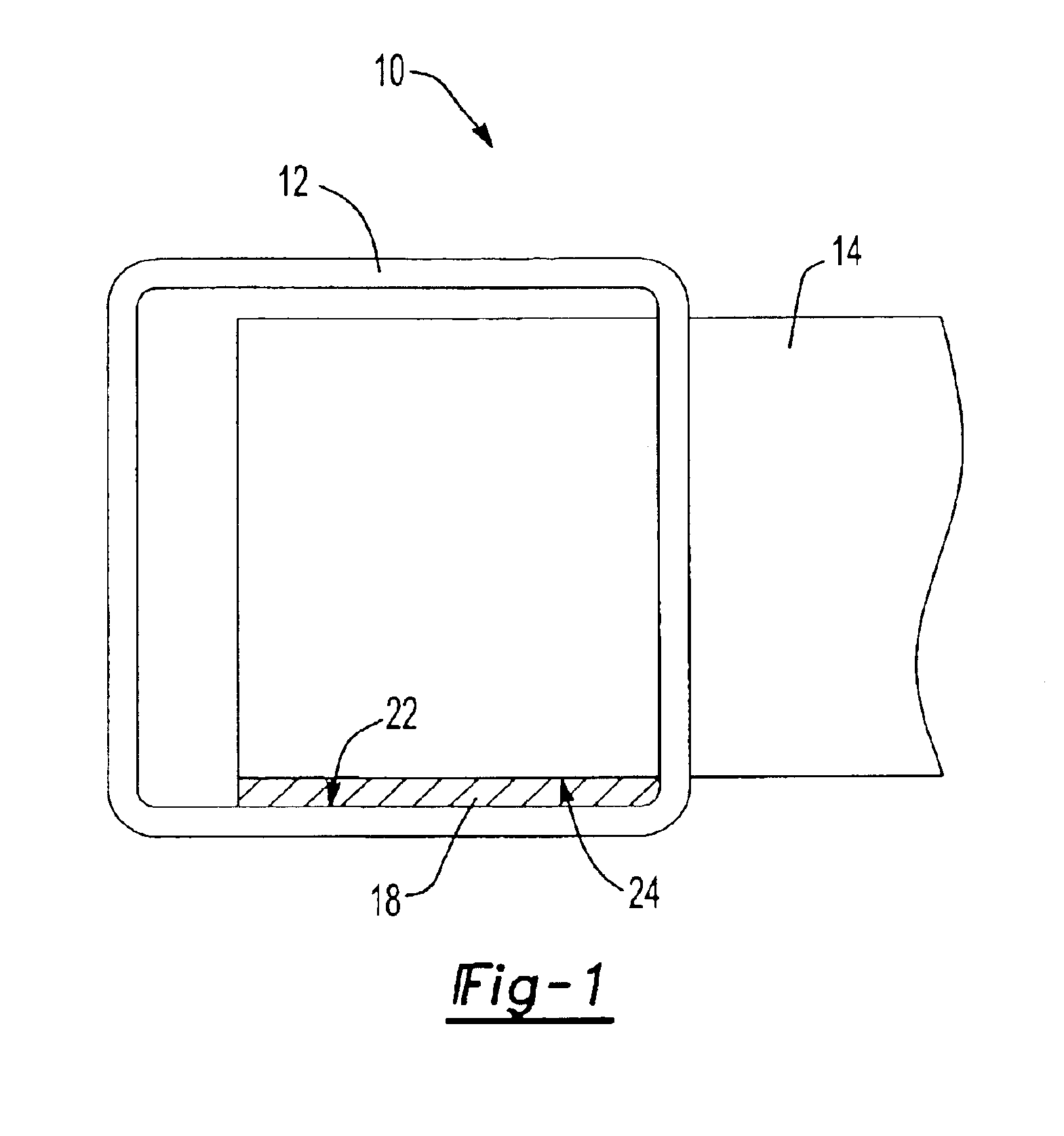Activatable material
a technology of activated materials and active materials, applied in the field of activated materials, can solve the problem of relatively tacky materials, achieve the effects of preventing fatigue crack growth, increasing the stiffness of the member, and facilitating the flow control of the material
- Summary
- Abstract
- Description
- Claims
- Application Information
AI Technical Summary
Benefits of technology
Problems solved by technology
Method used
Image
Examples
embodiments and examples
Highly Preferred Embodiments and Examples
It is contemplated within the present invention that polymers other than those discussed above such as thermoplastics may also be incorporated into the expandable material, e.g., by copolymerization, by blending, or otherwise. For example, without limitation, other polymers that might be appropriately incorporated into the expandable material include halogenated polymers, polycarbonates, polyketones, urethanes, polyesters, silanes, sulfones, allyls, olefins, styrenes, acrylates, methacrylates, epoxies, silicones, phenolics, rubbers, polyphenylene oxides, terphthalates, acetates (e.g., EVA), acrylates, methacrylates (e.g., ethylene methyl acrylate polymer) or mixtures thereof. Other potential polymeric materials may be or may include include, without limitation, polyethylene, polypropylene, polystyrene, polyolefin, polyacrylate, poly(ethylene oxide), poly(ethyleneimine), polyester, polyurethane, polysiloxane, polyether, polyphosphazine, polyam...
examples
Table A of exemplary expandable materials is provided below.
TABLE AMaterial AMaterial BMaterial CIngredientWt %sWt %sWt %sStandard Liquid Epoxy43.83%44.11%43.50%Solid Epoxy-CTBN Adduct36.07%36.27%35.80%Calcined Clay12.29%12.74%12.20%Aramide Fiber (opened) 1.46% 1.47% 1.45%Nanoclay 0.98% 0.98% 0.97%Dicyandiamide 3.65% 3.12% 3.63%Modified Urea 1.01% 0.89% 1.0%Modified Imidazole 0.50% 0% 0.5%Azodicarbonamide 0.00% 0.28% 0.75%Pigment 0.20% 0.14% 0.20%
Formation and Application of the Expandable Material
Formation of the expandable material can be accomplished according to a variety of new or known techniques. Preferably, the expandable material is formed as a material of substantially homogeneous composition. However, it is contemplated that various combining techniques may be used to increase or decrease the concentration of certain components in certain locations of the expandable material.
According to one embodiment, the expandable material is formed by supplying the components of th...
PUM
| Property | Measurement | Unit |
|---|---|---|
| Fraction | aaaaa | aaaaa |
| Fraction | aaaaa | aaaaa |
| Fraction | aaaaa | aaaaa |
Abstract
Description
Claims
Application Information
 Login to View More
Login to View More - R&D
- Intellectual Property
- Life Sciences
- Materials
- Tech Scout
- Unparalleled Data Quality
- Higher Quality Content
- 60% Fewer Hallucinations
Browse by: Latest US Patents, China's latest patents, Technical Efficacy Thesaurus, Application Domain, Technology Topic, Popular Technical Reports.
© 2025 PatSnap. All rights reserved.Legal|Privacy policy|Modern Slavery Act Transparency Statement|Sitemap|About US| Contact US: help@patsnap.com

